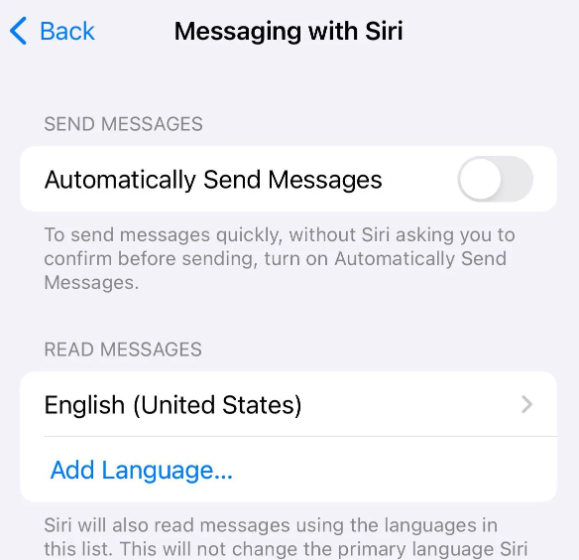
In Apple’s latest iOS 17.4 Beta 1 system update, Siri’s text message reading function has been optimized and upgraded. It is reported that the updated Siri can read the text message content according to the language specified by the user without interfering with the main language of other usage scenarios.

In this update, users only need to enter "Settings", "Siri & Search" and "Use Siri to Send Messages" in order to "Speak Messages" ” option to find the newly added “Add language...” function. After clicking, the system will display a series of optional languages for users to choose from, and they can just check according to their personal needs.

The description of the new feature clearly mentions: "Siri will read messages using the languages in the list. This does not change the primary language in which Siri listens and responds." This means Therefore, no matter how many reading languages the user has set, Siri will always use the primary language set by the user when receiving commands and replies. This feature ensures that users can maintain a consistent language environment when communicating with Siri, providing a more convenient and smooth experience. No matter how many languages the user chooses to read aloud, Siri will accurately understand the instructions and reply in the main language set by the user, allowing users to communicate with Siri more freely. Through the introduction of this feature, users can adjust their settings according to their own needs and preferences. In addition, some domestic users found that Siri's wake word settings have become more flexible after upgrading to iOS 17.4 Beta 1. In addition to the traditional "Hey Siri," users can now choose other, more personalized words to wake up Siri. This improvement undoubtedly improves Siri's usefulness and user experience.
The above is the detailed content of iOS 17.4 Beta 1 brings a new experience! Siri's multi-language SMS reading function has been fully upgraded, and the user experience has been further improved.. For more information, please follow other related articles on the PHP Chinese website!
 What does Apple LTE network mean?
What does Apple LTE network mean?
 The role of Apple's Do Not Disturb mode
The role of Apple's Do Not Disturb mode
 How to solve the problem that Apple cannot download more than 200 files
How to solve the problem that Apple cannot download more than 200 files
 Projector mobile phone
Projector mobile phone
 Common usage of Array.slice
Common usage of Array.slice
 What does it mean when a message has been sent but rejected by the other party?
What does it mean when a message has been sent but rejected by the other party?
 Printer installation failed
Printer installation failed
 What file is .exe
What file is .exe




